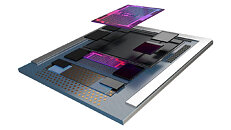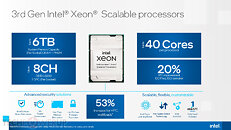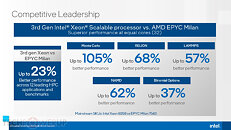
Intel Introduces the Max Series Product Family: Ponte Vecchio and Sapphire Rapids
In advance of Supercomputing '22 in Dallas, Intel Corporation has introduced the Intel Max Series product family with two leading-edge products for high performance computing (HPC) and artificial intelligence (AI): Intel Xeon CPU Max Series (code-named Sapphire Rapids HBM) and Intel Data Center GPU Max Series (code-named Ponte Vecchio). The new products will power the upcoming Aurora supercomputer at Argonne National Laboratory, with updates on its deployment shared today.
The Xeon Max CPU is the first and only x86-based processor with high bandwidth memory, accelerating many HPC workloads without the need for code changes. The Max Series GPU is Intel's highest density processor, packing over 100 billion transistors into a 47-tile package with up to 128 gigabytes (GB) of high bandwidth memory. The oneAPI open software ecosystem provides a single programming environment for both new processors. Intel's 2023 oneAPI and AI tools will deliver capabilities to enable the Intel Max Series products' advanced features.
The Xeon Max CPU is the first and only x86-based processor with high bandwidth memory, accelerating many HPC workloads without the need for code changes. The Max Series GPU is Intel's highest density processor, packing over 100 billion transistors into a 47-tile package with up to 128 gigabytes (GB) of high bandwidth memory. The oneAPI open software ecosystem provides a single programming environment for both new processors. Intel's 2023 oneAPI and AI tools will deliver capabilities to enable the Intel Max Series products' advanced features.




















































